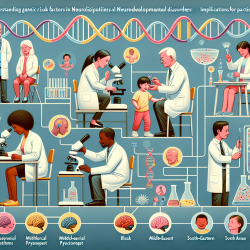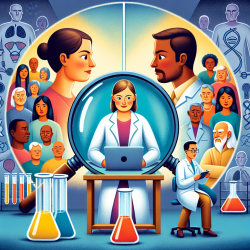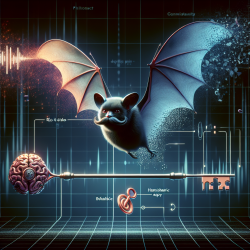Introduction
As a practitioner in the field of speech-language pathology, understanding the genetic underpinnings of neurodevelopmental disorders (NDDs) can significantly enhance your practice. The recent research article, "Targeted sequencing identifies 91 neurodevelopmental disorder risk genes with autism and developmental disability biases," offers groundbreaking insights into the genetic factors contributing to conditions such as autism spectrum disorders (ASD) and intellectual disabilities (ID).
Key Findings from the Research
The study identified 91 genes with a significant association with NDDs, including 38 novel genes not previously linked to these disorders. Notably, the research highlights a subset of 25 genes that exhibit a bias towards autism or intellectual disability, providing a clearer genetic distinction between these overlapping conditions.
Utilizing single-molecule molecular inversion probes (smMIPs), the researchers sequenced the coding and splicing portions of 208 potential NDD risk genes in over 11,730 cases. This approach allowed for the identification of de novo mutations and private disruptive mutations in 5.7% of patients, underscoring the genetic complexity of NDDs.
Implications for Practitioners
For practitioners, these findings underscore the importance of genetic considerations in the assessment and treatment of NDDs. Here are some ways to integrate these insights into your practice:
- Genetic Counseling: Incorporate genetic counseling into your practice to help families understand the potential genetic risks associated with NDDs.
- Personalized Interventions: Use genetic information to tailor interventions that address the specific needs of each child, potentially improving outcomes.
- Collaboration with Geneticists: Work closely with geneticists to interpret genetic testing results and incorporate them into your therapeutic strategies.
- Continuing Education: Stay informed about the latest genetic research in NDDs to enhance your understanding and application of these findings in clinical practice.
Encouraging Further Research
The study's findings also highlight the need for continued research into the genetic bases of NDDs. Practitioners can play a vital role in this endeavor by participating in research studies, contributing to data collection, and advocating for funding and resources to support genetic research.
Conclusion
Understanding the genetic factors associated with NDDs is crucial for developing effective interventions and improving outcomes for children. By integrating these insights into your practice, you can provide more informed and personalized care to your clients.
To read the original research paper, please follow this link: Targeted sequencing identifies 91 neurodevelopmental disorder risk genes with autism and developmental disability biases.










